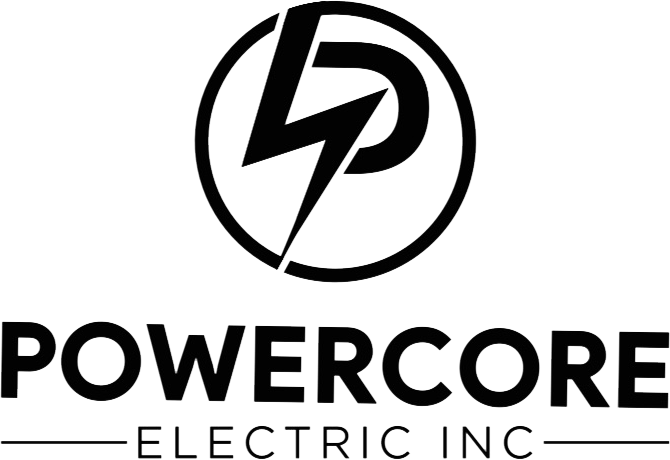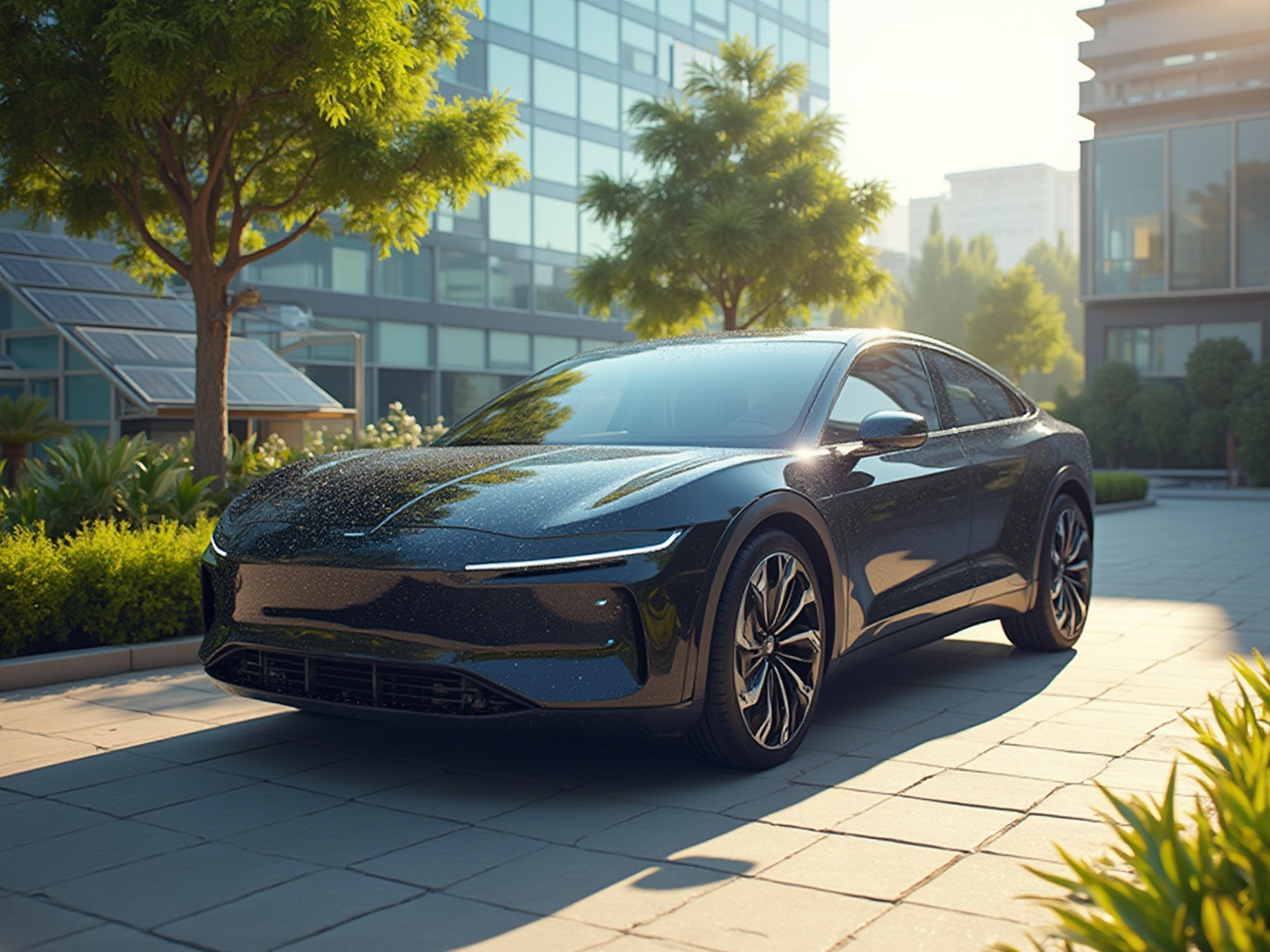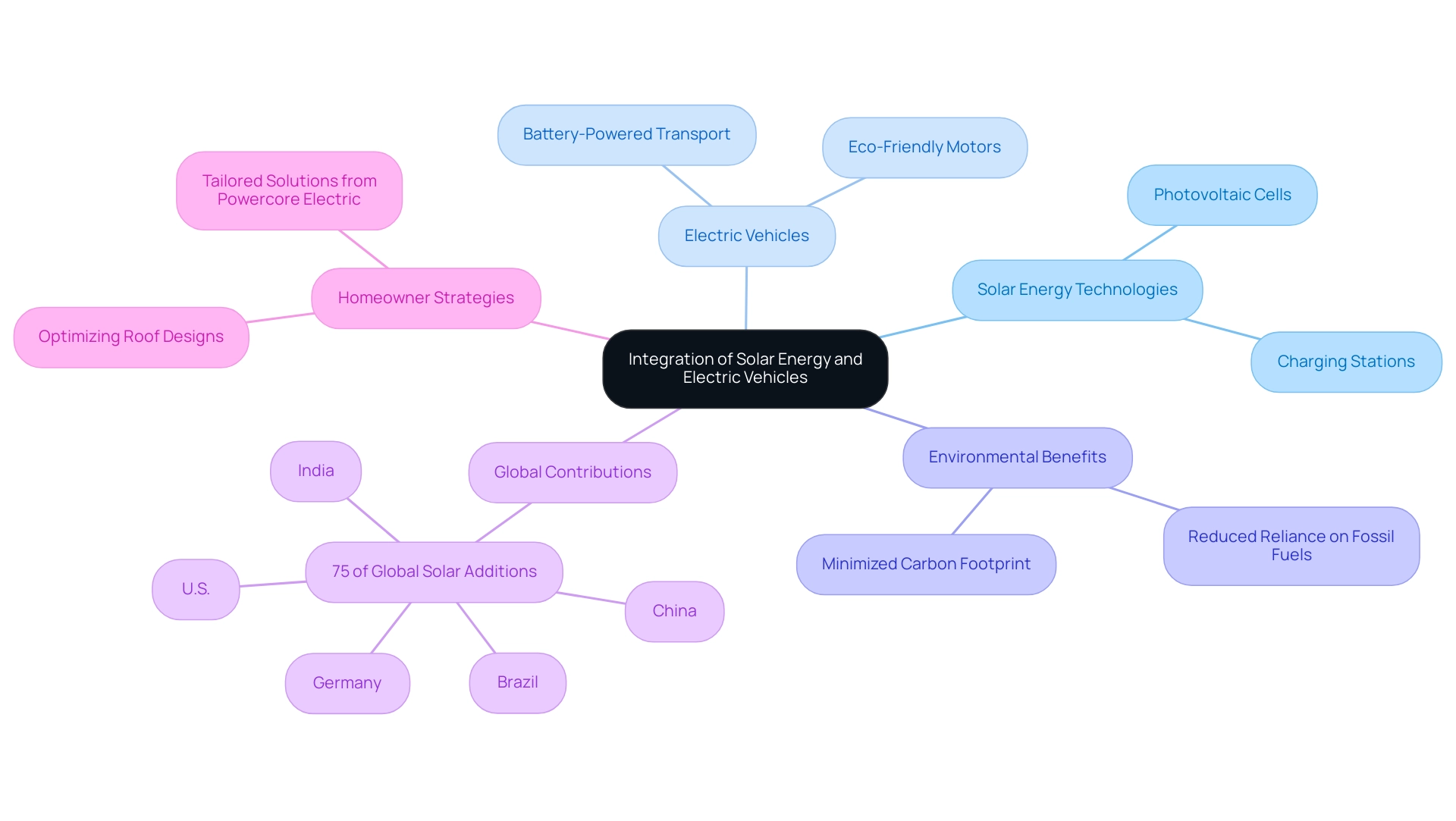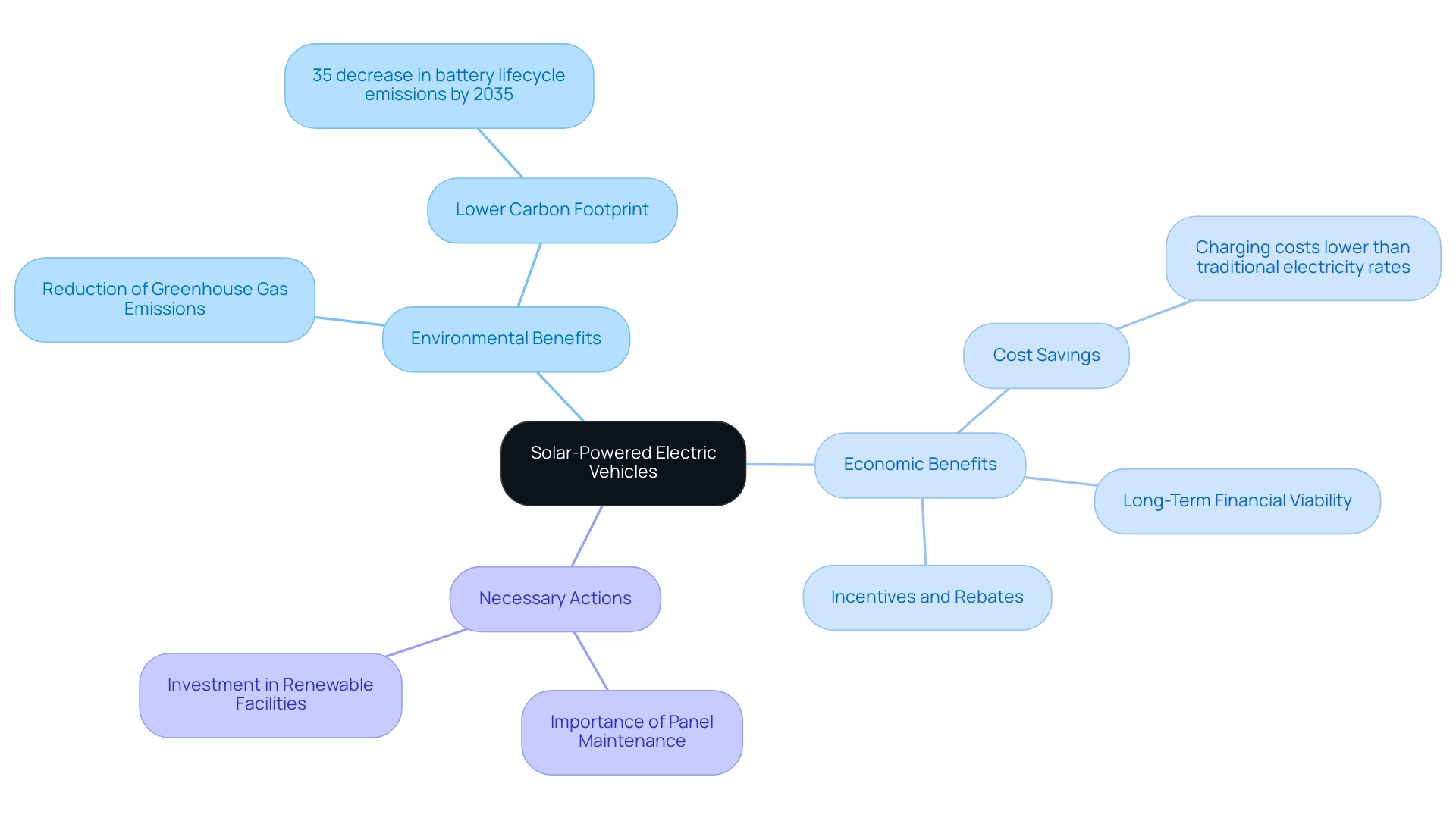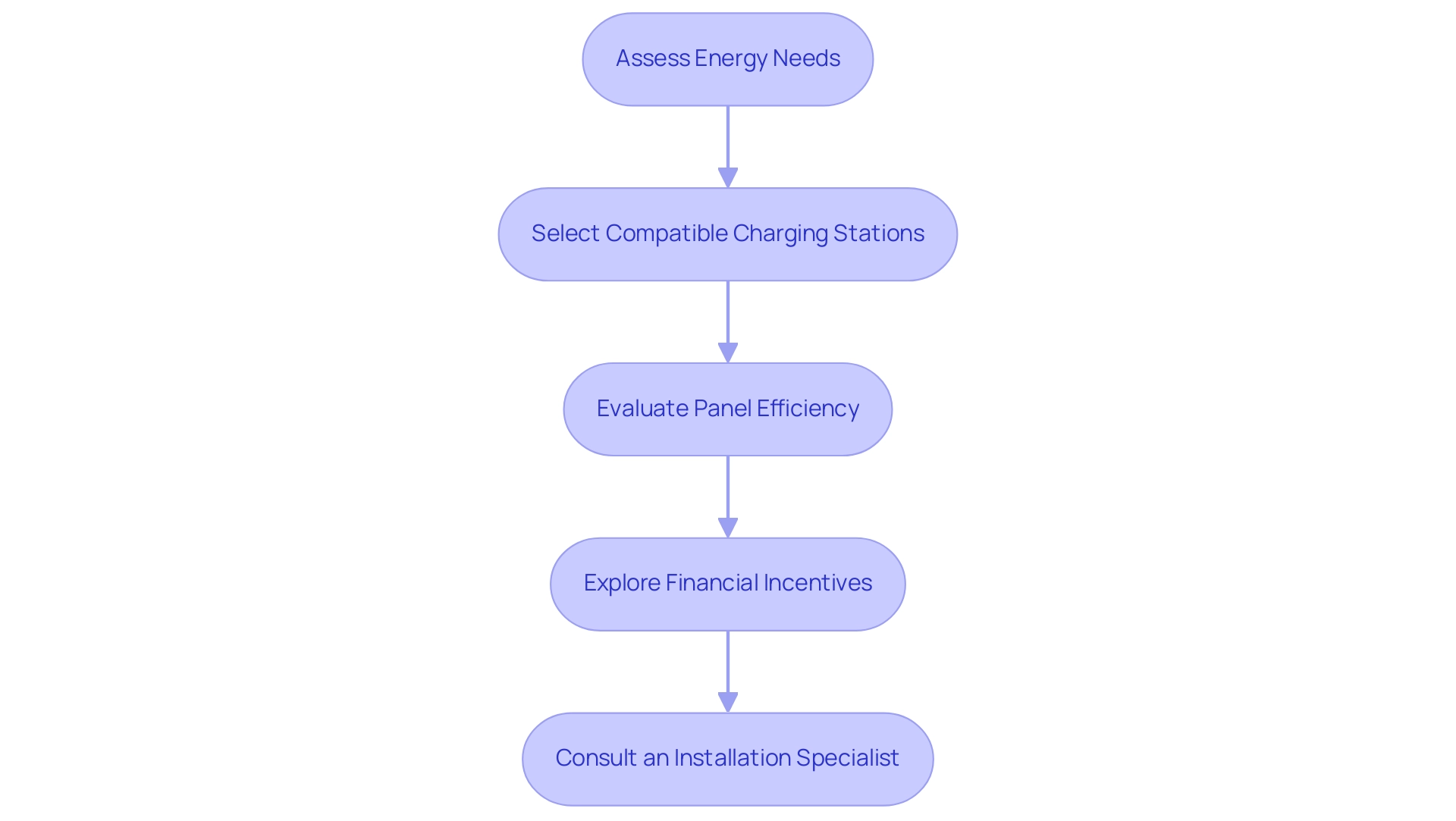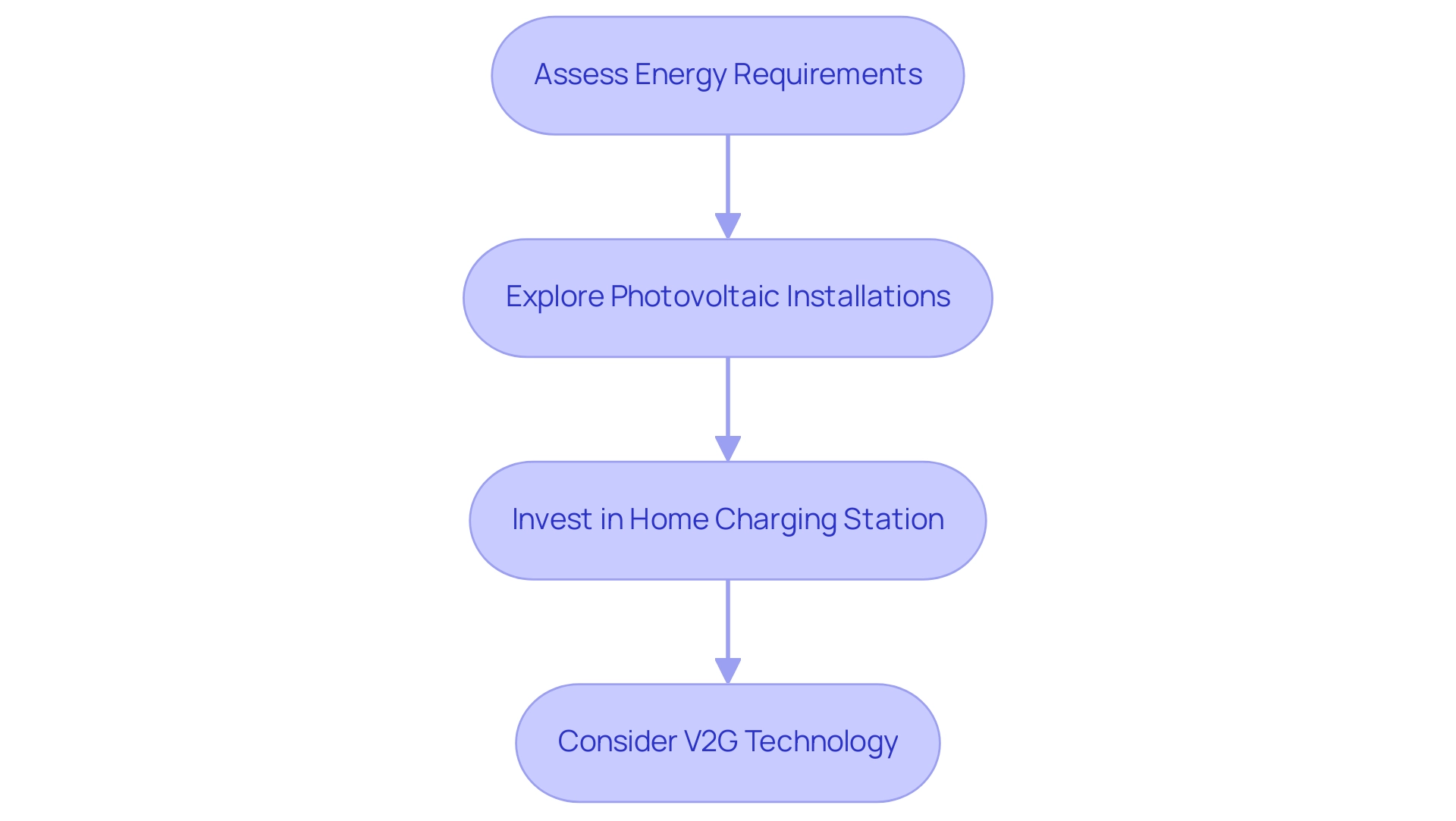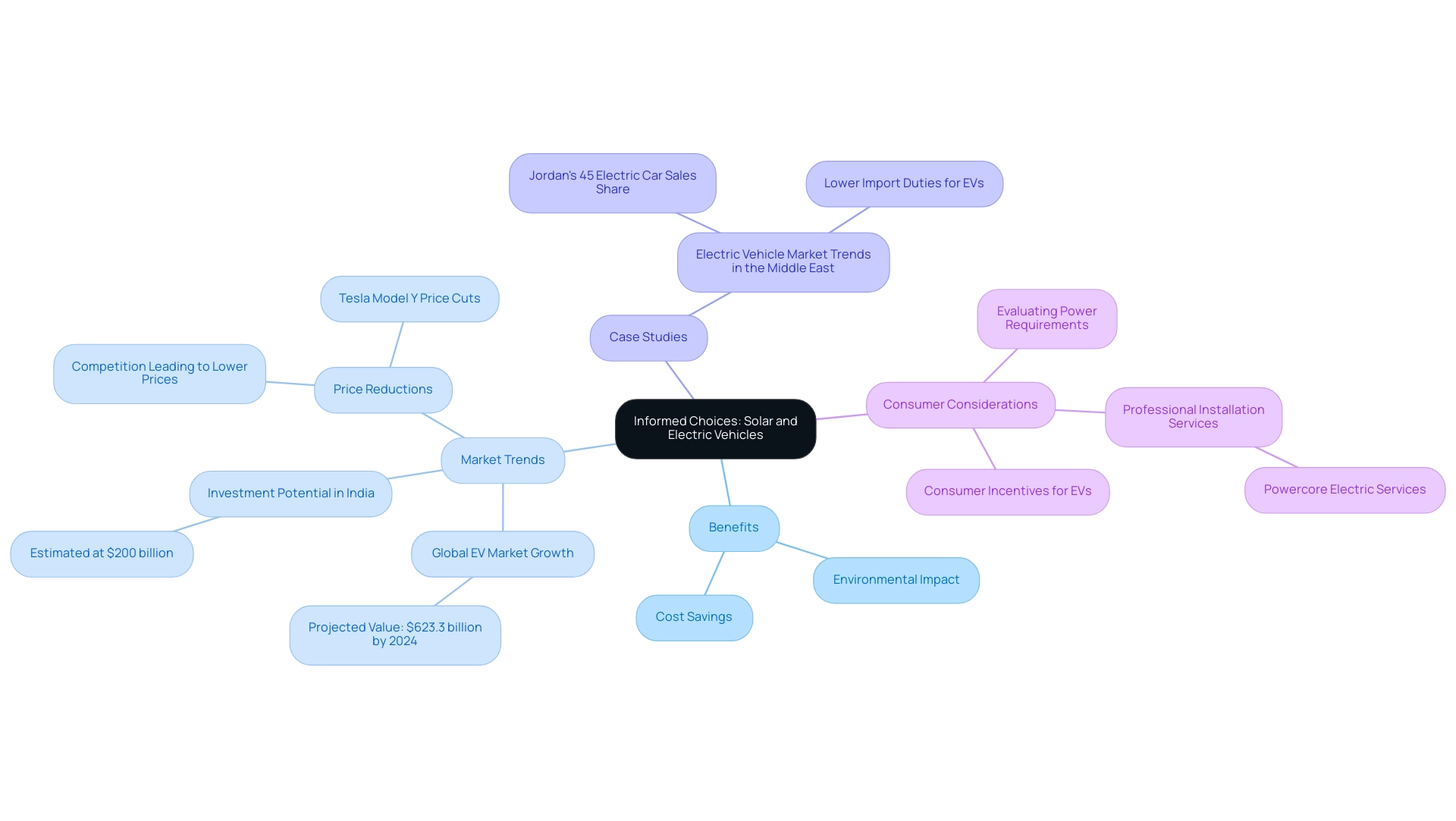Overview
The article focuses on the technologies and benefits of solar and electric vehicles, emphasizing their role in sustainable transportation and environmental conservation. It supports this by detailing how advancements in photovoltaic technology and battery efficiency enable homeowners to reduce their carbon footprints and achieve significant cost savings, while also highlighting the increasing accessibility and affordability of these green technologies.
Introduction
The intersection of solar energy and electric vehicles (EVs) is transforming the way homeowners approach sustainable living. With sunny Southern California as a prime example, harnessing the sun’s power through photovoltaic cells not only provides a clean energy source but also complements the rise of electric vehicles, creating a harmonious blend of innovation and eco-consciousness.
As more homeowners consider the benefits of solar-powered EV charging stations, the potential for reducing reliance on fossil fuels and minimizing carbon footprints becomes increasingly tangible. The advancements in battery technology and solar panel efficiency are making this duo not just a dream, but a practical reality.
This article delves into the exciting technologies, environmental benefits, and practical considerations of integrating solar energy with electric vehicles, paving the way for a greener, more sustainable future for communities everywhere.
Introduction to Solar and Electric Vehicles: Technologies and Innovations
Harnessing sunlight through photovoltaic cells to generate electricity, solar energy stands out as a clean and renewable resource, particularly in sunny Southern California. Simultaneously, battery-powered transports employ motors, rendering them a more eco-friendly option compared to conventional internal combustion engines. The rise of charging stations for solar and electric cars across Los Angeles exemplifies this integration, enabling homeowners to charge their automobiles sustainably.
Ongoing improvements in battery technology and the enhanced efficiency of photovoltaic panels have rendered the combination of renewable power and solar and electric cars not only achievable but progressively practical. By embracing these innovative solutions, homeowners can significantly reduce their reliance on fossil fuels and minimize their carbon footprints. This partnership represents a forward-thinking approach to sustainable transportation and aligns perfectly with the growing trend of eco-conscious living.
Notably, 85% of installers utilizing NREL’s SolarAPP+ permitting software report that it significantly eases the permitting process, highlighting the growing accessibility of photovoltaic technology. Additionally, the total photovoltaic contributions of China, the U.S., India, Germany, and Brazil are anticipated to represent an astonishing 75% of worldwide photovoltaic increases in 2024, signifying a significant global influence of renewable advancements. As corporate giants like Amazon, Google, and Meta commit to sustainability with a combined contracted pipeline of over 25 GW, the incorporation of renewable sources and solar and electric cars is set to become even more prominent, paving the way for a cleaner, greener future right here in our communities.
In addition, homeowners in San Diego can maximize their solar power potential by considering roof designs that optimize sunlight exposure, further enhancing the efficiency of their solar installations. Powercore Electric offers tailored solutions to meet these needs, ensuring that every installation is crafted with unmatched quality and local expertise. Our dedication to sustainability is evident in our customer-first approach, where we prioritize your satisfaction and collaborate closely with you to develop the best solutions for your home.
The Environmental and Economic Benefits of Solar-Powered Electric Vehicles
Solar and electric cars play a significant role in the fight against climate change by reducing greenhouse gas emissions. When powered by renewable energy, these vehicles can greatly lessen their carbon footprint compared to traditional gas-powered cars. In fact, recent projections indicate that battery lifecycle emissions are set to decrease by approximately 35% by 2035, making the shift to electric vehicles even more impactful.
However, it’s important to note that transportation sector emissions in the U.S. remained unchanged from 2022 to 2023, with slight increases in emissions from motor gasoline and jet fuel. This stagnation highlights the urgency of adopting solar and electric cars as a solution to mitigate these emissions. Financially, homeowners with photovoltaic systems can benefit from significant reductions in fuel expenses, as powering their automobiles with renewable sources is frequently far more economical than depending on traditional electricity prices.
For example, the cost of charging an EV with renewable energy can be significantly lower than the average electricity rates, which can lead to savings of hundreds of dollars annually. Additionally, numerous states offer incentives and rebates for both panel installations and electric vehicle purchases, further enhancing the financial advantages for consumers. While rooftop energy projects can be significantly more costly, investing in solar and electric cars remains a financially sound decision, especially with the available incentives.
It’s worth mentioning that options like Tesla home chargers not only facilitate this transition but also emphasize the expanding market for panel cleaning services, which are essential for maintaining efficiency and longevity of installations. Grasping how photovoltaic panels function is essential for homeowners to maximize their benefits, and regular cleaning ensures optimal performance. Matthew Eisenson, a key figure at the Renewable Resources Legal Defense Initiative, emphasizes that achieving net-zero carbon dioxide emissions by the early 2000s will require siting an unprecedented number of renewable facilities in a very short time.
This urgency makes investing in solar and electric cars not only an environmentally responsible choice but also a smart economic decision.
Practical Considerations: Solar Panel Integration with Electric Vehicles
Incorporating photovoltaic panels with your solar and electric cars is a remarkable method to utilize renewable resources and lessen your carbon footprint. Let’s break down the practical steps to get you started! First, it’s essential to assess your energy needs.
Consider how much electricity your home and EV need, and ensure your energy system can handle that load. You might need to invest in additional equipment, such as charging stations that are compatible with your home energy setup, ensuring you select the best options for your specific needs.
Keep in mind that the efficiency of your panels can vary based on where you live and the size of your array—more sunlight means better performance! According to recent statistics, the anticipated increase in the integration of photovoltaic panels with solar and electric cars in 2024 is propelled by declining costs and heightened environmental awareness among homeowners. While initial costs can seem daunting, especially with local incentives varying widely, the long-term savings on your energy bills can make it worthwhile.
Many government programs for photovoltaic panels provide financial incentives, such as tax credits and rebates, which can significantly lower the upfront costs of installing energy systems and EV charging solutions.
Understanding how photovoltaic panels function for the charging of solar and electric cars is crucial. When sunlight strikes the panels, they transform it into electricity, which can be utilized to energize your home and charge solar and electric cars. This process not only decreases your electricity expenses but also allows you to use solar and electric cars to power your automobile, further minimizing your carbon footprint.
For instance, the case study of solar and electric cars sales in Uzbekistan illustrates how collaborations with manufacturers have led to increased availability of EVs, which can be enhanced by sunlight charging solutions. If you’re uncertain where to begin or seek customized solutions, consulting with an installation specialist can assist you in maximizing efficiency and optimizing your investment. Remember, going green not only supports our planet but also fosters a sustainable lifestyle for you and your family!
The Future of Solar and Electric Vehicles: Trends and Innovations
The future of solar and electric cars is shining brighter than ever, bringing exciting innovations that promise to transform our transportation landscape. Imagine if, in 2023, all internal combustion engine (ICE) and hybrid models of SUVs had been battery-powered units—we could have avoided around 770 million tons of CO2 globally! This emphasizes the considerable ecological effect of shifting to battery-powered transport.
Thanks to recent advancements in battery technology, solar and electric cars now provide longer ranges and quicker charging times, making them more convenient for everyday use. Moreover, with solar panel efficiency increasing, homeowners can more easily harness renewable sources. One particularly exciting development is vehicle-to-grid (V2G) systems, which permit EVs to not only draw power but also return it to the grid.
This innovation not only provides a potential revenue stream for owners but also enhances overall energy resilience. As John Bozzella, CEO of the AAI, pointed out, ‘[The] EPA’s proposed emissions plan is aggressive by any measure,’ setting ambitious goals for automotive electrification in the coming years. As the battery-powered transportation market grows, we can anticipate a surge of more budget-friendly choices in solar and electric cars and increased collaboration between the renewable energy and automotive industries.
While challenges such as high interest rates and economic uncertainty may present obstacles, the forecast for sales of electric-powered transportation remains encouraging. To effectively combine renewable energy with solar and electric cars, homeowners should consider the following step-by-step approach:
- Assess your energy requirements and automobile usage.
- Explore available photovoltaic panel installations and government incentives.
- Invest in a compatible home charging station.
- Consider V2G technology to maximize energy efficiency and potential earnings.
Together, we are paving the way for a sustainable transportation future that benefits all of us.
Key Takeaways: Making Informed Choices About Solar and Electric Vehicles
Grasping the link between solar energy and solar and electric cars is essential for homeowners dedicated to sustainable living. The benefits of solar and electric cars are plentiful: these solar-powered EVs significantly reduce environmental impact while offering considerable cost savings over time. As the global EV market is projected to reach a staggering $623.3 billion by 2024, competition is driving down prices, making these modes of transportation more accessible than ever.
With India’s EV sector investment potential estimated at around USD 200 billion, it’s clear that the shift towards electric mobility is gaining global momentum. In the Middle East, Jordan leads the region with over 45% of electric car sales, supported by lower import duties compared to traditional combustion engine cars. This case study illustrates how favorable policies can influence the adoption of solar and electric cars, reinforcing the argument for considering them in regions with similar incentives.
When contemplating a solar-powered EV, it’s essential to evaluate your specific power requirements. Evaluating your home’s power usage will assist in determining the scale of the installation needed to effectively charge your car. Additionally, don’t overlook the benefits of consumer incentives available for both renewable systems and electric vehicles, which can greatly improve the affordability of your shift to sustainable living.
Powercore Electric provides extensive services, including professional EV charger installation and electrical panel enhancements, ensuring your home is prepared for a sustainable future. By making informed decisions and exploring options like the Tesla Model Y—which has seen price reductions thanks to market competition—homeowners can enjoy the benefits of modern technology while contributing to a greener future. So, are you prepared to transition to renewable energy?
Contact Powercore Electric today to explore what solar energy can do for you! Get your free, personalized estimate and gear up to drive into a cleaner future—your wallet and the planet will thank you!
Conclusion
The integration of solar energy and electric vehicles presents a powerful opportunity for homeowners to embrace sustainable living. By harnessing sunlight through photovoltaic cells, individuals can charge their electric vehicles while significantly reducing their carbon footprints. This combination not only supports environmental health but also offers considerable economic benefits, including lower energy costs and potential savings through government incentives.
As advancements in technology continue to enhance the efficiency of both solar panels and electric vehicles, the practicality of this eco-friendly solution becomes increasingly evident. The rising trend of solar-powered EV charging stations, particularly in regions like Southern California, exemplifies how communities can lead the way in sustainable transportation. With the global electric vehicle market projected to expand rapidly, now is the perfect time for homeowners to explore their options and take action.
Ultimately, the shift towards solar-powered electric vehicles is not just a personal choice; it’s a collective step towards a cleaner, greener future. By investing in solar energy and electric vehicles, homeowners can play a crucial role in combating climate change while enjoying the benefits of modern technology. The journey towards sustainability is within reach, and the resources to support this transition are more accessible than ever. Embracing these innovations today can pave the way for a brighter tomorrow for everyone.
